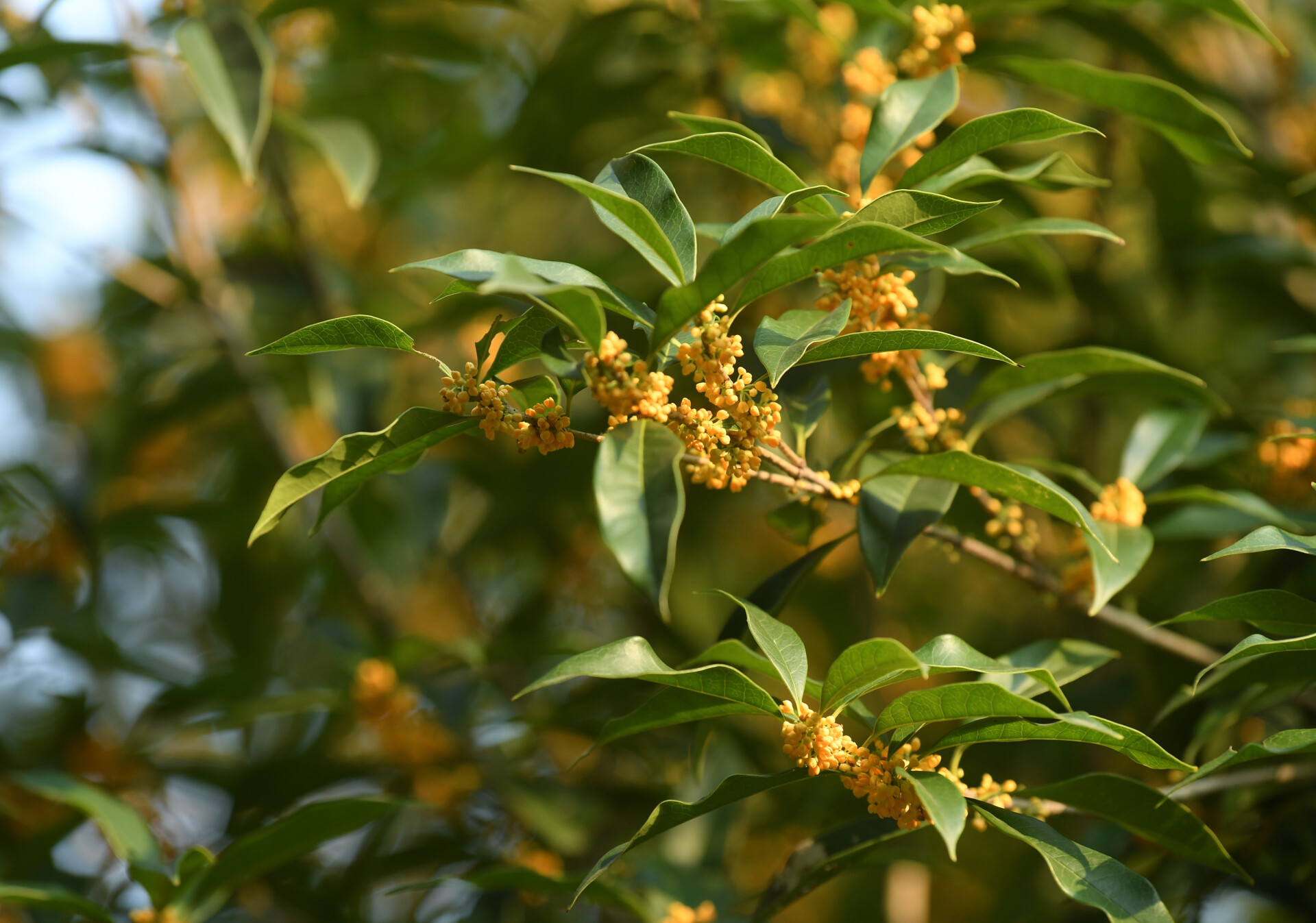As Osmanthus blooms in various regions this autumn, the streets of Guangdong are filled with their fragrance. While admiring these blossoms, you may want to be cautious of pollen allergies and refrain from picking or consuming roadside Osmanthus.

Osmanthus (Photo: Xinhua)
Risk from flower viewing: severe epiglottitis can be fatal within minutes
Many people have reported symptoms like sneezing, runny noses, and persistent coughing as autumn sets in, leading to a recent surge in allergy-related medical visits. Some clinics have seen over 20 allergy cases in a single morning, with pollen allergies being the primary cause.
Take care, especially if you have a history of rhinitis, as exposure to Osmanthus could lead to severe reactions. For example, Ms. Wang, in her early 50s, developed symptoms of chest tightness, difficulty breathing, and a sore throat after an outing to view Osmanthus with friends. Diagnosed with acute epiglottitis, her condition was triggered by a pollen allergy, resulting in life-threatening inflammation.
Doctors explain that the epiglottis, a crucial part of the throat, closes off the windpipe during swallowing to prevent food from entering. When inflamed, the epiglottis can swell, blocking the airway, and potentially causing asphyxiation within minutes.
· Seek immediate medical attention if you experience any of these symptoms:
- Severe throat pain that worsens with swallowing
- Difficulty swallowing, especially when even saliva is hard to swallow
- A sensation of obstruction in the throat, causing slurred speech
- Difficulty breathing, which may lead to pale skin, blue lips, and possible fainting
Increased pollen raises risk of seasonal allergic rhinitis in autumn
Fluctuating temperatures and dry air in autumn heighten the presence of pollen and dust in the air, which can easily trigger allergic rhinitis. In addition to pollen, dew and rain can lead to mold growth on fallen leaves, posing further allergy risks for those sensitive to mold spores.
Symptoms of allergic rhinitis include frequent, successive sneezing (often 3-10 times in a row), a continuous runny nose, an itchy nose, and nasal congestion.
· How to differentiate from a common cold
Unlike the common cold, allergic rhinitis may include symptoms of eye itching, redness, tearing, and skin rashes. Colds often come with throat pain, cough, fever, and muscle aches, and typically resolve within a week, while allergic rhinitis persists longer and tends to recur.
· Prevention tips for autumn allergic rhinitis
- Avoid exposure to allergens like mites, mold, and pollen.
- Avoid handling flowering plants or animals with fur, and choose smooth clothing that reduces pollen adherence when outdoors.
- Wearing protective masks and goggles can also help alleviate symptoms.
- After returning indoors, change clothes promptly and clean your face, including a saline nasal rinse.
- Regularly change bedding and dehumidify rooms to maintain indoor air moisture.
Seek professional medical advice if symptoms of allergic rhinitis develop, as improper or self-administered medication may worsen symptoms or cause adverse reactions.
Avoid picking or eating roadside Osmanthus blossoms
Roadside Osmanthus flowers can carry bacteria and insect eggs, which are difficult to clean thoroughly and may cause digestive issues, especially for those with weak immune systems. Additionally, fresh Osmanthus pollen can trigger allergies, making it unsuitable for use in homemade tea.
Public Osmanthus trees are also exposed to dust, vehicle emissions, and pesticides, making them unsafe to eat. Instead, purchase Osmanthus products through reliable sources that have been properly processed. If you experience any symptoms after consuming Osmanthus, seek medical attention immediately.
Reporter | Chen Longyan
Editor | Will, James
















